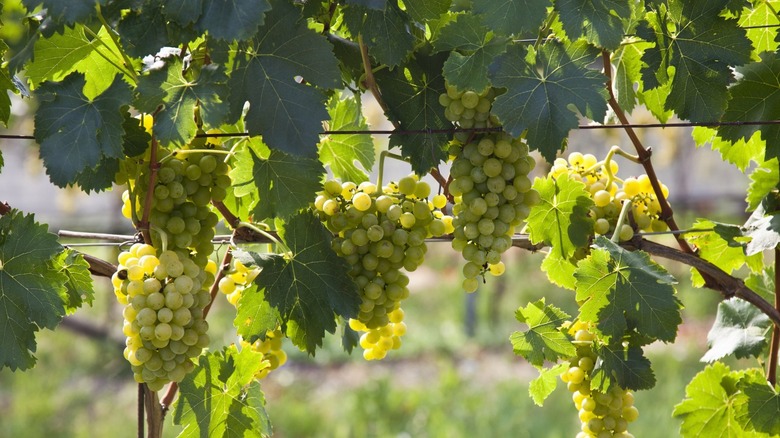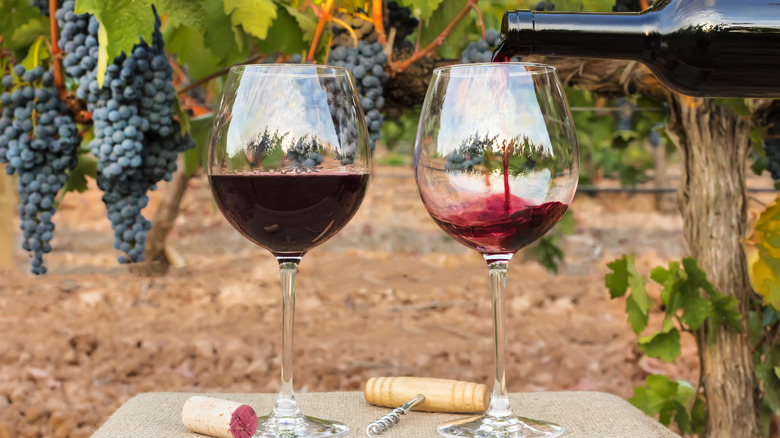Raise Your Hand If You Don't Know What Glou-Glou Is
Are you a wine person? Do you know your Chablis from your Chardonnay? France has given the world a lot of great gifts (like pâtisserie and the standard to which fine dining is held worldwide), but wine is perhaps the most widely known and appreciated French export. The country exported $10.1 billion in wine in 2020, according to OEC, with most of it heading to the United States, the United Kingdom, and Germany. At the same time, France was the 11th largest importer of wine, receiving about $275 million of wine from Spain, followed by Italy, and Portugal.
France's wines are so special because of how and where they're produced. The term "terroir" is used to describe this notion, that the soil, terrain, and climate in which the grapes are grown, as well as the human touch, is what makes wine unique. Because the "where" matters so much, each variety of French wine is named after the region it's grown in instead of the grapes it's made of. Some of your favorite tipples might come from Bordeaux on the western coast of France, where of course, you have sauvignon blanc and Bordeaux blends, or from Alsace on the border of Germany, where you can find Rieslings or Pinot Gris and Pinot Noir. And it's not Champagne if it doesn't come from Champagne, after all. If you find some French wines too heavy or too serious, maybe you can try to find yourself some glou-glou.
The Beaujolais region is known for its casual, drinkable wines
Like "rosé all day" describing the easy drinking of rosé wine, glou-glou is a catch-all word to describe a style of wine usually known as vin de soif, literally "thirsty wine" — the kind of wine that's approachable, easy to drink, and quenches your thirst. The origins of the term glou-glou date far back, to the 1600s at least. It's onomatopoeic for the sound liquid makes coming out of a bottle — a French version of the English "glug-glug." Surely, the sound it makes is because it's just so drinkable and just glugs right out of the bottle and into a glass.
Many glou-glou wines hail from the Beaujolais region of France, where they produce natural wines that are often fruity, light, and low in alcohol and tannins. These features are what make the wines so drinkable. According to Wine Folly, the Beaujolais region doesn't take itself too seriously, and it's reflected in what the region produces. Tasting notes include fruits like raspberry and cherry, as well as a few hints of umami like mushrooms or forest floor. You can pair glou-glou with pizza and burgers or enjoy it chilled. It's the kind of wine you can sit back and relax with friends and just enjoy — it's glou-glou.

